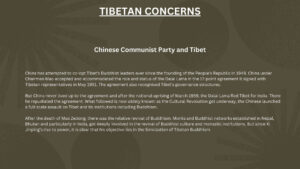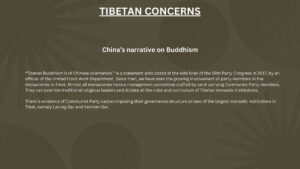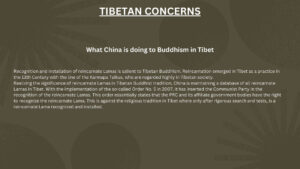NEW DELHI: On Thursday, India will host the first Global Buddhist Summit, a two-day event with over 300 delegates from Buddhist institutions all over the world attending including the Dalai Lama. The goal, according to a blurb on the website of the Indian government backed International Buddhist Confederation, is to “discuss some of the world’s most pressing issues and look for solutions in the Buddha Dharma which promote universal values”.
Two of the topics mentioned in the blurb merit a closer look. One is on Environmental Crisis, Health & Sustainability and the other is on the Preservation of the Nalanda Buddhist Tradition.
The focus on Environmental Crisis hints that the summit could discuss China’s reckless exploitation of Tibet’s natural resources causing degradation and pollution of the countryside.
Chinese companies, according to the online freetibet.org are “quickening their exploitation of copper, gold and lithium in Tibet, tearing up the landscape and causing enormous pollution. Huge hydroelectric dams are built across Tibet’s rivers, generating power for cities in eastern China but causing Tibetan villages to be flooded and depriving people downriver of a regular supply of water”.
Millions of rural Tibetans have been relocated from their pastures and into urban settlements, while villages have seen livestock and water supply poisoned.
The focus on the Nalanda Buddhist Tradition is probably to underscore that Tibetan Mahayana Buddhism originally came from India. It reflects India’s belated realisation that China has seized the narrative on Buddhism with the goal of “owning” it.
China scholar Jayadeva Ranade, in a paper for the Carnegie Endowment in 2017, wrote that Buddhism is described as an “ancient Chinese religion” by Beijing, which flies against the atheist outlook and practices of the Chinese Communist Party. Yet, by allowing people the freedom to practice Buddhism, the party evidently hopes to soothe domestic discontent in Tibet and ensure social stability.
But the Communist Party’s interest also reflects something else: today there are an estimated 185 million to 250 million ethnic Chinese Buddhists (comprising 13% to 16% of the population). When the dominant Han Chinese population is actively embracing Buddhism (which existed for centuries in China before being suppressed by the Communist Party when it took over in 1949), it’s clear the party sees a need to keep track and monitor.
None other than the Dalai Lama commented on it when he noted, during an address in Bodh Gaya in January, “the growing interest in Buddhism in China”. He saw it in positive terms, saying that “there could be much change happening in China …”
A lot depends on how the atheist Communist Party is able to square the circle on any religion leave alone Buddhism. It’s not easy to get official sanction to open a temple. A number of religious licenses are required that need the consent of powerful local officials, which is not always forthcoming. Without a license, one cannot raise money for running a temple. Those seeking to open churches and mosques have it even tougher.
Regulations governing religion are seen as insufficient to protect the devout. In the absence of a modern religious law reflecting the situation on the ground, reports say it is not uncommon for temples to be deprived of their assets, nor can the rights of the devout be adequately protected. Retired party cadres and officials are barred by law from professing or practicing any faith. So much for a constitution that claims religious freedom.
Yet China is seeking to build the narrative that Buddhism is home grown, a “Chinese product”. It is spending money refurbishing temples and monasteries destroyed during the chaotic years of the Cultural Revolution in the 1960s. Buddhist religious figures from Southeast Asia are being feted regularly in China. The aim is to build a Buddhism with “Chinese characteristics” and use it to enlarge Beijing’s strategic influence.
India’s Global Buddhist Summit maybe long in coming but gives notice to China that its narrative on Buddhism is flawed and will be challenged.













